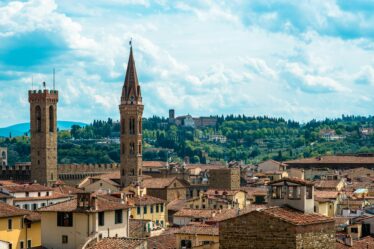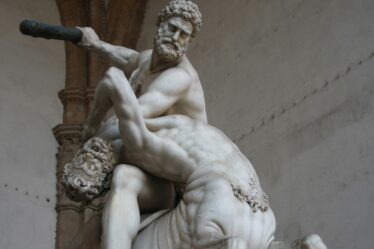

The story of Ponte Santa Trinita and its sculpted heads is indeed fascinating. Here’s a deeper look into the tale:
The History of the Bridge
Ponte Santa Trinita is one of Florence’s most elegant bridges, originally built in wood in 1252 and later reconstructed in stone. The bridge we see today, designed by the famous Florentine architect Bartolomeo Ammannati, was completed in 1569, commissioned by the powerful Medici family. Its graceful elliptical arches make it a Renaissance masterpiece, admired for both its beauty and engineering.
The Sculpted Heads
The bridge is adorned with four sculpted heads at its corners, representing the four seasons: Spring, Summer, Autumn, and Winter. These statues were added by sculptor Pietro Francavilla in the late 16th century, under Ammannati’s supervision. Each head adds a symbolic layer to the bridge, reflecting the passage of time and nature’s cycles.
Destruction During World War II
In August 1944, as German forces retreated from Florence during World War II, they destroyed all of the city’s bridges across the Arno River, except for the iconic Ponte Vecchio. Ponte Santa Trinita was among those blown up, leaving behind nothing but rubble in the river. The elegant arches and the sculpted heads were lost to the waters, a tragic loss for Florence’s architectural heritage.
The Reconstruction and the Missing Head
After the war, the bridge was painstakingly reconstructed using original stones recovered from the Arno River. The restoration project was a monumental task, led by the architect Riccardo Gizdulich, and was completed in 1958. However, during the reconstruction, it was discovered that one of the four sculpted heads, representing “Spring,” was missing.
The Rediscovery of the Spring Head
The mystery of the missing head became a local legend. It wasn’t until 1961 that the head was miraculously found. According to some accounts, a diver searching the riverbed stumbled upon the sculpture, buried under mud and debris. Others say that the head had been secretly hidden by locals during the war to protect it from the Nazis and was returned to its rightful place after the bridge was rebuilt.
Regardless of how it was found, the discovery of the Spring head allowed for the complete restoration of the bridge. The head was reinstalled, and Ponte Santa Trinita was returned to its former glory, once again gracing the Arno River with its timeless beauty.
The Significance of the Story
The story of Ponte Santa Trinita and its missing head symbolizes Florence’s resilience and determination to preserve its cultural heritage. The bridge not only represents a piece of Renaissance art but also stands as a testament to the city’s ability to recover from the devastation of war.
Today, visitors crossing Ponte Santa Trinita can admire the sculpted heads and reflect on the history that flows beneath their feet, a blend of art, war, mystery, and restoration.



